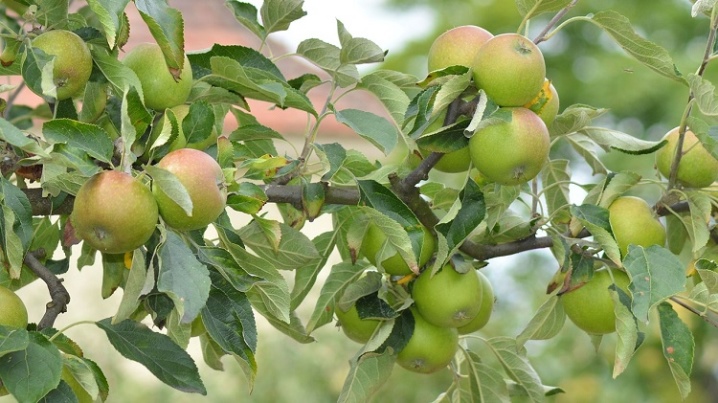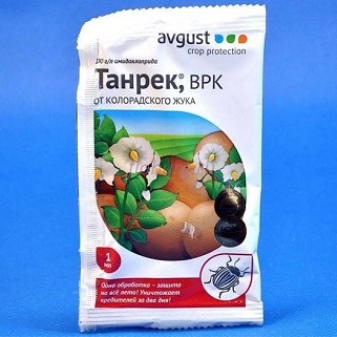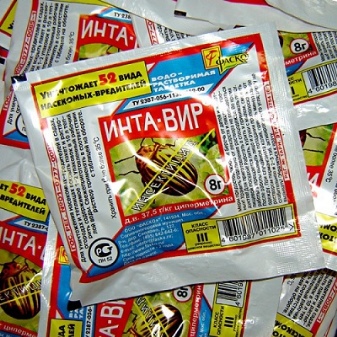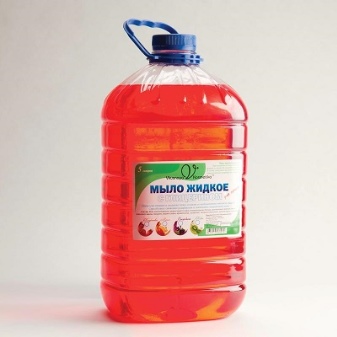What and how to spray apple trees in the spring?

Modern breeders have bred many varieties of apple trees that have good resistance to many diseases. Despite this, insects also progress, learning to adapt to changes in the environment.
This is why preventive treatment of apple orchards is so important, especially when the grower expects to get a rich harvest for sale.

Timing
The term for early processing of apple trees depends on the region.... In the south, spraying can be carried out at the beginning of April, and sometimes at the end of March, it all depends on the weather. In the northern regions, May is the best time to start such work. Choose a fine, windless day with temperatures above freezing for spraying. It's not scary if there was a minus at night, the main thing is that the air warms up to 4-5 ° during the day. It is very important that it does not rain after spraying.
Throughout the spring, you need to carry out 2-3 sprays with an interval of 2 weeks.

What can be processed?
For spraying apple trees in spring, both fungicides and insecticides are used. When choosing an insecticide, pay attention to how it works. Systemic drugs will not help (they must penetrate the plant sap, which the pest will then eat and die). In our case, there are no leaves yet, and the insects are just waking up. Therefore, it is important to use drugs with contact action.
Besides, it is better to use agents with a wide spectrum of action, that is, against various insects, as well as ticks. In this case, you will not have to study the effect of drugs on each other and the laws of preparing tank mixtures. Plant pathogens also overwinter successfully in the garden and can be significantly reduced with eradication spraying. At this stage, it is possible to successfully deal with scab, it is possible to prevent moniliosis.

Drugs
From pests and from many diseases, including fruit rot, classic drugs for eradicating problems are iron (copper) vitriol and urea... It is believed that copper sulfate has the broadest spectrum of action and has an effect on almost all pathogens of fungal diseases. For spraying, we take a large concentration - 3-5% (300-500 mg per 10 liters of water). We also dilute urea in high concentration - 5-7% (500-700 g per 10 liters of water). Commercial fungicides can be used by diluting them at high concentrations. For example, those containing copper oxychloride, copper sulfate, difenoconazole, propiconazole, cyprodinil.
Often gardeners carry out processing Bordeaux liquid... Insectofungicides, including DNOC, are of great help. It is worth diluting it with ten liters of water, using 50 grams. Apply before buds appear on the tree, and no more than once every three years. A good drug in this group is Nitrafen. The same volume of water will require 200 grams of funds. Of the large number of fungicides on the market, Fitosporin is very popular. Ten liters of water will require only 5 grams.
Copper Sprays Is the main product used to combat a wide range of fungal and bacterial diseases affecting apple trees. Copper fungicide disrupts the enzymatic system of the pathogen and prevents the germination of spores. Apple scab, European canker, fire and brown rot are just a few of the tree diseases that copper fungicides can fight.
They can generally be used 24 hours before the harvest date and are non-toxic to bees or birds, but toxic to fish and other aquatic organisms.


If it is necessary to apply an insecticide, then it is worth choosing among such means as Confidor, Calypso and Intavir. Also antibiotics are widely used against harmful microorganisms:
- "Ampicillin";
- Ofloxacin;
- Fitolavin.
Insecticidal soaps contain long-chain fatty acids that are less toxic than chemical insecticides. It helps fight a variety of common garden pests including ticks, aphids, whiteflies, thrips, and grasshoppers. It is safe for use around people, pets, and nature in general, but can harm beneficial insects such as ladybugs and lacemakers. This non-toxic insecticide must come into contact with insects to control their reproduction. Soap destroys the insect's protective coating, its cell membranes, causing the pest to die. Once the insecticidal soap dries, it is no longer toxic and degrades quickly in the environment. The product can be applied to apple trees until the day of harvest.
There is one more remedy - bacterial insecticide, designed to kill only certain types of pests. It does not harm beneficial insects, controls the larval stages of butterflies and moths, which feed on the fruits and leaves of the apple tree. Some products target mosquito larvae. Used as a spray, after the target pest has eaten the bacteria, it stops feeding and dies within a few days. This insecticide is non-toxic to mammals, humans, birds, fish, bees.


Folk remedies
There are effective methods of dealing with the moth, not only with specialized means. Folk remedies also help to get rid of insects, and such treatment at an early stage turns out to be quite effective if you observe concentration. Among some of the most effective remedies for pests - neem oil and garlic infusion. They repel insects, thereby protecting the tree.
Also used salt, which is previously dissolved in warm water. A pack of salt is placed on a bucket of liquid. The whole tree is sprayed with brine, grabbing branches and foliage. It is difficult for spores that spread fungal diseases to break through the resulting film to the apple tree. The only drawback is that such a product is easily washed off under the influence of precipitation.
Tar crumble - perfect for spring processing. It has a pungent scent that repels not only aphids, but other insects as well. Moreover, spraying with this remedy helps the apple tree to repair damaged tissues. To prepare an effective remedy from such soap, you need to take two pieces of water for two liters of water and dissolve. The resulting mass is diluted in the proportion of two liters of soap to ten liters of water. The concentrate in this form is diluted again, at the rate of 1 liter of soap for the same amount of water. The resulting solution is sprayed onto the apple trees. The treatment is repeated every two weeks.
It has a negative effect on insects and diesel fuel... It not only scares them off with the smell, but also helps prevent the occurrence of some diseases that cause rot. In its pure form, this tool is not used, half a liter is diluted in a ten-liter bucket of water.
It is worth using diesel fuel early in the spring, when there are not even buds yet.



Spring processing stages
Sprinkling apple trees in the spring before budding is an event not to be missed. Thanks to this treatment, the apple trees are provided with the necessary protection against insects and diseases. Spraying is necessary at least 4 times during this period and there are several reasons for this:
- most pests have different time to exit from hibernation;
- fungal diseases appear not only with the arrival of heat, but also later, after a couple of months.
First, the apple trees need to be sprayed on the bare branches, then when greens appear, then when the color swells and the last time when the ovaries form. The dosage in each case is calculated individually, taking into account the recommendations of the insecticide manufacturer.
In different regions and climatic conditions differ. This is one of the reasons why you need to be guided by the weather. They begin to spray the mixture when the buds have not yet blossomed, while all the snow should already have melted, and the air temperature should not fall below + 5 C.

First step
When the buds are still asleep, and the branches are bare, the first processing of the apple trees is carried out. It is necessary to destroy the spores left by the fungi. They are easily carried by the wind.
Suitable for processing:
- "Nitrafen";
- Horus;
- inkstone;
- "Hom";
- liquid containing copper sulfate and urea.
Copper, which is found in most sprays, will kill fungal infections. The advantage of using urea is that it is also a fertilizer.

Second phase
Usually, the second time the apple trees are sprayed when it is already from + 10 to + 15 C. On average passes about 14 days from the first treatment. The buds swell, a green cone begins to form, and the insects slowly emerge from hibernation. To help the tree, insecticides and fungicides are used at this stage. One drug is needed to fight disease, the other to combat pests.
It's time when the flower beetle makes its attack. His task is to penetrate the apple blossom and lay eggs there. When the larva is born, it will suck the juice from the bud, which will never open again. To combat the pest, drugs such as:
- "Fufanon";
- Tanrek;
- "Spark";
- "Decis";
- Intavir;
- Bordeaux liquid (1%).


Stage Three
Processing is necessary during the formation of the buds, but before they open. The moth is an insect that has to be fought during this period. She lays eggs on the stalk, due to which the gardener receives wormy apples in the future.
Bordeaux liquid is not useful at this stage, so it is replaced with insecticides. It is necessary to process not only the tree, but also the area around the trunk.

Fourth stage
The last treatment is necessary after the apple orchard has lost its color. Fits "Aktara" and "Speed". For 10 liters of water, 2 grams of each drug is needed.
Useful Tips
In order to successfully fight diseases and insects that most often harm the fruits on an apple tree, you need to identify a specific problem. From the outside, it may seem that the apples on the tree are infected with a disease, when in fact, the damage is due to the attack of birds or insect pests. Typically, the disease begins on shoots or foliage before spreading to flower ovaries and fruits. Pruning on a regular basis and routine monitoring of the state of fruiting apple trees, especially during the growing season, help in the fight in the first stage, before the first signs of disease and insect damage appear.
Before purchasing sprays and other drugs that help fight disease, it is worth investigating the cause of the problem... When the gardener understands what caused the appearance of ulceration, discoloration of foliage or damage to shoots, then he has a good chance of getting rid of the disease.


Experts give their advice in the fight against diseases of apple trees.
- In the spring, before leaf buds bloom, it is necessary to spray against diseases such as scab and leaf spot, as well as insects - curculionoid beetles and leaf-eating caterpillars. Treatment immediately after the flowers have fallen and before the cups are closed, with fungicidal sprays.
- To cure apple scab, regularly clean under apple trees and burn infected foliage that contains fungal spores... This activity will help stop the progression of the disease and prevent its transfer to other apple trees. Trees are sprayed with liquid soap, thus preventing the appearance of fungal infections. Repeat the treatment after a week.
- The best way to treat black rot is to remove from the area and burn the fallen leaves and fruits that have been infected, remove the bark and ulcers that have appeared, and keep the area under the apple tree clean. A fungicidal spray that contains copper is best, and lime sulfur is also used for further control.
- Due to the fact that powdery mildew hibernates in fallen leaves, it is strongly recommended to prevent further spread of the disease by cleaning the soil in the fall. Humid conditions are favorable for the development of the disease, therefore, it is necessary to ensure good air circulation when planting new apple trees. Spraying the trees with lime sulfur is a good treatment option. Pruning white shoots is another great solution to this disease.


If the gardener sees signs of one of the common fungal diseases on foliage or apples, then the first steps to deal with the problem must be taken immediately.
- Old foliage that gathers under a tree in autumn must be burned.... This is the only way to reduce the likelihood that fungal spores will spread in the air or soil.
- Watering is carried out early in the morning or after sunset in the evening. The leaves must remain dry, so it is best to use root watering.
- A 3 cm layer of compost is laid out under the apple tree, but about 50 cm recede from the trunk, so as not to provoke the spread of the fungus.
- Copper soap has proven itself well among fungicides. Use it two weeks before the growing season begins, and repeat the treatment after 7 days, as a preventive measure.
- If the problem gets out of control, apply a systemic fungicide to the soil.... With its help, it is possible to suppress the growth of the fungus.
- Disinfect the pruning shears you are using, a solution of 10% bleach diluted in water, or alcohol and water.
Planting disease-resistant apple trees can be your first line of defense. Among the attack-resistant varieties - "Jonafrey" and "Liberty", it is also worth planting "Gold Rush" on your site, and possibly "Enterprise". Apple trees "Cortland" and "Redfrey" are also distinguished by good qualities. Bedbug season begins around the end of spring. This is the right time to start controlling insects through the use of insecticides. They, in turn, help stop the process of mating and laying eggs on or near the opening fruit.
Pests that attack apple trees and damage fruits: moth, fruit fly larva.


Common mistakes
If the grower does not have the experience or the necessary knowledge, spring treatment may harm the apple trees, not help. Of the most frequently repeated mistakes:
- the use of insecticides and fungicides is started too early, therefore, they are quickly washed off by sediments, as a result, insects do not meet the proper resistance, and diseases are barriers to further spread;
- it is imperative to comply with the deadlines and between sprays, at least two and no more than three weeks should pass to achieve the desired result;
- if the remedy for the disease is diluted incorrectly, then you can easily burn not only foliage, but also fruits;
- when the fruits have already appeared on the branches, fungicide and insecticide treatments should be discontinued.















The comment was sent successfully.